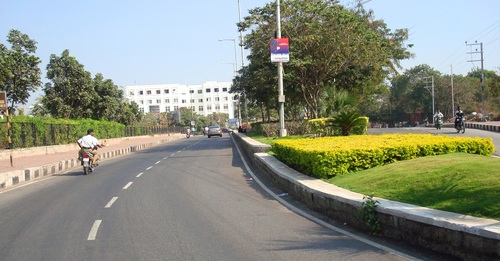By Prashant Thakur, Sr. Director & Head – Research, ANAROCK Group
Investment in residential real estate is a very different kettle of fish than end-user homebuying. When the intention is returns on investment, knowing how the housing asset class is performing is of prime importance. From a ROI perspective, there are two buckets to check – capital appreciation and rental yields. Let’s examine this.
Property Prices
As per ANAROCK Research, the current avg. prices in the top 7 cities are collectively approx. INR 6,150 per sq. ft. If we look back, the last five years have seen an increase of over 11% across the top 7 cities (from INR 5,551 per sq. ft. in 2018 to approx. INR 6,150 per sq. ft. in 2022).
If we delve deeper and consider the yearly trends in the last five years, it emerges that 2022 saw the maximum yearly rise (6%) in average property prices (INR 5,826 per sq. ft. in 2021 to INR 6,150 per sq. ft. in 2022). The previous four years, on the other hand, saw either no change or a maximum of 3-4% y-o-y increase in 2021 against 2020. Before the Covid-19 pandemic, property prices across cities remained range-bound due to a prolonged demand slowdown.
Post the pandemic, demand soared across cities – as did developers’ input costs – causing prices to rise, particularly in 2021 and 2022. Another factor driving prices up is the fact that most sales happening now are by branded developers who have not shied away from price hikes on the back of strong demand and rising construction costs.
Among the cities, southern cities of Bengaluru and Hyderabad have seen maximum 5-yearly increase of 10% in average property prices in last five years. Average property prices in Bengaluru stood at INR 4,894 per sq. ft. in 2018 and went up to INR 5,570 per sq. ft. in 2022. As for Hyderabad, average prices in 2018 in the city stood at INR 4,128 per sq. ft. and had risen to INR 4,620 per sq. ft. in 2022.
| Avg. Property Prices across Top 7 Cities in last 5 Yrs. (INR/sq. ft.) | |||||
| City | 2018 | 2019 | 2020 | 2021 | 2022 |
| NCR | 4,546 | 4,569 | 4,580 | 4,781 | 5,025 |
| Kolkata | 4,415 | 4,378 | 4,385 | 4,512 | 4,700 |
| MMR | 10,497 | 10,595 | 10,610 | 11,092 | 11,875 |
| Pune | 5,455 | 5,495 | 5,510 | 5,733 | 6,000 |
| Hyderabad | 4,128 | 4,185 | 4,195 | 4,372 | 4,620 |
| Chennai | 4,920 | 4,931 | 4,935 | 5,070 | 5,315 |
| Bangalore | 4,894 | 4,961 | 4,975 | 5,217 | 5,570 |
| Total Avg. | 5,551 | 5,588 | 5,599 | 5,826 | 6,150 |
Rental Yields
Rental yield saw a decline across most cities in 2020 when compared to 2019 – a natural fallout of the pandemic and its work-from-home and e-schooling ethos. 2021 saw some improvement, with rental yields rising across cities and nearing 2019 levels. However, 2022 saw a decent rise in rental yields, which breached pre-Covid levels of 2019 across all the top 7 cities. This was largely due to a sudden spurt in rental demand with offices and schools reopening.
The current rental demand will remain strong in all cities as urban work opportunities rise and more people migrate to cities.
ANAROCK Research indicates that Bengaluru has the highest rental yield of 3.9% among all major cities, followed by Mumbai with 3.8%.
| Cities | Rental Yield (in %) in 2019 | Rental Yield (in %) in 2020 | Rental Yield (in %) in 2021 | Rental Yield (in %) in 2022 |
| Gurgaon | 3.5 | 3.4 | 3.5 | 3.7 |
| Noida | 3.2 | 3 | 3.1 | 3.4 |
| Greater Noida | 2 | 2 | 2.3 | 2.8 |
| Delhi | 2.2 | 2.1 | 2.3 | 2.6 |
| Pune | 3.3 | 3.1 | 3.2 | 3.5 |
| Bangalore | 3.6 | 3.4 | 3.5 | 3.9 |
| Mumbai | 3.5 | 3.3 | 3.5 | 3.8 |
| Navi Mumbai | 2.8 | 2.6 | 2.7 | 3.2 |
| Thane | 2.7 | 2.5 | 2.6 | 2.9 |
Outlook for 2023
There is little reason to be pessimistic in the current year, though under-researched investments and a short-term profit perspective must be avoided in 2023.
All the factors that drove up capital appreciation and rental yields are firmly in place, and the profitability potential for both investment rationales remainspromising. That said, 2023 will face some headwinds in terms of economic slowdown and inflationary pressure, and this needs to be factored into any investment decision – including for real estate.
The RBI will likely take a pause after a spate of interest rate hikes, so growth momentum will continue. 2023 will continue to be driven by end-user demand, but serious long-term investors will find the market dynamics more than favourable. Property prices are likely to rise by another 5-8% in the larger cities – this bodes well for investors focused on capital appreciation, but also means that rental demand will increase.
Because of the new demand profile, larger-configuration homes will outperform compact affordable housing. Properties by branded large developers will pay better dividends in terms of both rental yields and capital appreciation.
Also Read: MahaRERA Inaugurates the First batch of Real Estate Agents Training









